Are you a Quiet Speculation member?
If not, now is a perfect time to join up! Our powerful tools, breaking-news analysis, and exclusive Discord channel will make sure you stay up to date and ahead of the curve.
While blocks like Ravnica and Shards of Alara have recently shown the power of multicolor cards, artifacts have been amongst the most powerful cards in the game with cards like the original Moxen, Cursed Scroll and Umezawa's Jitte making an impact throughout Magic's history. These powerful cards have their own inherent strengths and weaknesses which will be discussed as well as a general overview of the cube SWOT series and how to utilize the lessons learned from it in your cube.
Strengths:
While it may be very obvious, it still needs to be said: due to their colorless casting cost, artifacts are extremely flexible as they are playable in just about every deck. Aside from the obvious fact that colorless spells are easy to cast, the fact that artifacts are colorless is useful for several reasons. The cards themselves tend to be earlier picks in a draft as artifacts do not tie a player to a color, since a card like Sword of Light and Shadow or Masticore can be used in any deck. While some cards like Bonesplitter may be better in aggressive archetypes, it's the idea that Bonesplitter can be used in any aggressive deck, regardless of color, that makes it a much lower-risk card to take in a draft.
Artifacts can be played in anything, obvious fact is obvious, right? What about some other, less obvious strengths of artifacts?
Some artifacts provide abilities that are typically aligned with certain colors to every color.
In almost all of the previous SWOT articles' mono-color sections, I've noted how powerful artifacts can be very useful in these decks, as I gushed about how amazing Molten-Tail Masticore and Cursed Scroll are in white, black, red and green mono-color archetypes and cards like Oblivion Stone and Nevinyrral's Disk are useful in mono-blue decks. This is because powerful artifacts help to shore up weaknesses inherent in colors and archetypes.
Due to the fact that Molten-Tail Masticore is a source of direct damage (a mostly red ability) that can deal damage to a player it can be a very powerful card in a Golgari deck since it can destroy planeswalkers, something that can be difficult for those decks. On the other hand, a card like Oblivion Stone can help a control deck with few ways of destroying hordes of opposing creatures (such as a Dimir deck with only a Black Sun's Zenith) ass well as annoying permanents such as Sulfuric Vortex.
Obviously, Molten-Tail Masticore is still amazing in a deck like Boros or Gruul aggro, but the ability to shore up important weaknesses is an especially useful trait of artifacts.
Equipment brings the ability to increase power and toughness to creatures of all colors as historically, "buffs" have typically relegated to green and white with few cards in the color colors performing that task. Many of these cards are very universally playable, as a card like Sword of Light and Shadow are extremely useful in just about any deck with creatures. The reach element provided by equipment is especially important since powerful equipment is useful in all aggressive decks, giving easy ways to close the game out.
Cards like Lodestone Golem and Winter Orb provide means of mana disruption, a strength mostly best represented in red and white. These powerful cards help to keep the opponent in the early phases of the game, making these cards aggro all-stars and making black and green aggressive decks stronger by giving them a unique ability that is mostly underrepresented in those colors.
Lastly, artifacts contribute colorless mana acceleration through cards like Mind Stone, Everflowing Chalice and the controversial Signets, an ability normally represented in green. No matter which ones a cube designer uses, these powerful cards assist control-based decks in accelerating past the early stages of the game that they seek to minimize.
Weaknesses:
Some artifacts are not as powerful as their chromatic counterparts.
A few examples are in cards like Bonesplitter and Triskelion as these cards are less powerful than Rancor and Inferno Titan, respectively. Both artifacts are powerful cards, but it is important to note that more powerful color counterparts exist. Does the fact that more powerful cards with mana symbols exist bar a card from a cube? Not necessarily.
Artifacts are also vulnerable to artifact destruction cards. While, again, this may seem like an obvious statement, this is important to note since colors heavy in artifact removal, namely green and red, can easily destroy these powerful cards. It is also important that these colors have that strength of being able to easily destroy artifacts since artifacts are so easy to play in a cube, and cards like Uktabi Orangutan can act similarly to Nekrataal against the appropriate permanents.
Opportunities and Threats – Usage of Artifacts in Cube:
As mentioned earlier, artifacts play a very important role in cube due to their ease of inclusion – while Rancor may be an extremely powerful card that's overall more powerful than Bonesplitter, picking a card like Bonesplitter will almost guarantee that the card will make the deck whereas Rancor may not due to it being green.
While this may give the impression that artifacts can warp a cube, I have found that this is not necessarily the case. This could happen if the colorless artifact cards outnumber the main color (WUBRG) sections, because then the emphasis shifts to drafting artifacts and then committing to a color later. Think of Mirrodin draft and how drafters could easily take artifacts and mana Myr in early picks, eventually settling on a later color. This is a rather extreme example and I have yet to see something like this happen in a cube.
It is important to note that much like all cards in a color aren't universally playable and some are best in archetypes like aggro or control, the same applies for artifacts in cube.
Aggressive Artifacts:
- Bonesplitter
- Grafted Wargear
- Ankh of Mishra
- Tangle Wire
- Smokestack
- Mana Crypt
These artifacts are aggressive in nature because they help a player deal as much damage as possible. Who cares if your Bonesplitter-equipped Isamaru dies when it attacks into an Obstinate Baloth? There are more creatures that are attacking with it!
Mana Crypt is a card that some mistakenly play in midrange and control but bad there since mana crypt is great due to assumption that game will end quick - game will end quick if you're in aggro and you're able to cast Soltari Champion on turn 1 and Avalanche Riders on turn 2! (If you're going to try to cheat in some late control finisher, Crypt will likely just kill you.)
Midrange/Universal Artifacts:
- Crystal Ball
- Mox Emerald (and the rest of the original Mox cycle)
- Skullclamp
- Loxodon Warhammer
- Mimic Vat
Universally playable artifacts such as those listed above are deemed so because they are very useful due to their flexible nature as since they're useful in just about anything: Crystal Ball is useful because card selection is useful in many archetypes. Aggro doesn't want early beaters in the midgame, control wants to hit its gas in the late game. While likely better in control, it is universally playable (the analogue being Ajani Goldmane or similar cards.)
Control artifacts:
- Nevinyrral's Disk
- Oblivion Stone
- Wurmcoil Engine
- Myr Battlesphere
Control-based artifacts are most useful in control decks since they align with a control-based strategy: gaining massive card advantage through mass-removal and big late-game finishers.
Something also important to note: cards such as Crystal Shard and Vedalken Shackles, while they appear to be artifacts with no color commitment upon first glance, are actually blue cards since they are optimal in decks with Islands. (And Shackles is just useless without Sslands at all!) It is important to consider these cards as blue cards when building a cube and putting them in the appropriate section as such due to the fact that they are essentially blue cards and putting them in a blue section helps to keep a cube balanced. (Also to note, blue in general has a very good synergy with artifacts as these cards amongst many others are great in "the artifact deck" which is typically blue-based because of cards like Tezzeret, the Seeker, Tinker, Trinket Mage and Tolarian Academy.)
SWOT Conclusions and Lessons:
I hope that you've enjoyed this series of articles looking at the sections in cube from a holistic and analytical point of view. Of course, this isn't just meant to be a refresher course, nor a mere cataloging of strengths, weaknesses and archetypes from a powered cube perspective as of the release of Mirrodin Besieged. My articles seek to be for people who have all types of cubes and this SWOT series is no exception. But if a peasant (only commons and uncommons) cube can't have cards like planeswalkers and Hero of Bladehold as a strength in white, what lessons can be gleaned?
The first thing to note is that over the course of Magic's history, the 2-color decks have mainly had the same strategy over time. For example, Gruul's best decks have typically been aggressive in nature, whether they were curving from Kird Apes into Erhnam Djinns or Rift Bolts into Scab-Clan Maulers. While the exact cards used in the examples for what a color brings to an archetype may be different in different rarities and types of cubes, the overall components play the same role. Even if white doesn't have access to planeswalkers in a commons cube, a white-based control deck will still use cards with repeatable effects like Cenn's Enlistment.
But other strengths play very different roles using the concept of comparative advantage. For example, in a peasant cube, red has a plethora of amazing mass-removal effects such as:
- Pyroclasm
- Breath of Darigaaz
- Volcanic Fallout
- Slice and Dice
- Firespout (which is actually a mainly-red card.)
- Sulfurous Blast
As mentioned in the red SWOT, red has mass-removal in powered cubes through cards like Starstorm, Crater Hellion and Rolling Earthquake. However in peasant cubes, it's important to note that this strength is particularly powerful since there aren't many in other colors outside of relatively inefficient ones such as Pestilence, Crypt Rats and Dakmor Plague as there is no Wrath of God, Damnation or Black Sun's Zenith at uncommon or common. This makes red's already solid strength of mass-removal even better due to its comparative advantage and it is important to note these strengths in a cube.
On the same page, it is important to realize that some themes in a color won't manifest very well some cubes. For example, one of the historical themes of white has been in life gain and for the most part, these cards aren't very powerful. This is apparent in a powered cube since there aren't many cubeworthy lifegain cards outside of something like Lone Missionary and the partially-white Kitchen Finks. But in a pauper cube, cards like Renewed Faith, Lone Missionary and Aven Riftwatcher are pretty solid cards due to the lower power level in that format. Therefore, lifegain is relevant as a strength as pauper control decks to effectively combat aggressive decks since the cards are efficient enough to be used in that format, but not necessarily in a non-large powered cube.
How exactly these themes manifest is ultimately based on what you want your color to do. While there are lots of dragons in red and mass-removal effects in white, including a lot of them doesn't support their archetypes appropriately and archetypes like Boros will suffer. Sure, archetypes like Boros ramp and midrange will do well, but since the archetype is best represented by an aggressive strategy, making it so that Boros midrange is its ultimate form is ultimately a disservice to the archetype and both colors, since better-built archetypes will destroy Boros (this isn't to say that Boros midrange and ramp shouldn't happen, but when Boros is seen in a cube, it should be aggressive most of the time.) On the other hand, if extremely powerful artifacts are taking over a cube, including more red artifact destruction like Smash to Smithereens and Manic Vandal may be useful to combat those strategies and to give drafters an incentive to have more mountains in their decks. Just don't get carried away and start including suboptimal cards like Gate to Phyrexia in your cube, it's always important to keep overall power level in mind.
This is what is the most important lesson to be learned from these articles – to understand how the colors and color pairs play optimally and to play to their strengths to make the colors able to compete and to have all 5 cylinders must be firing at once! This is because if blue control is supported but red aggro isn't supported, this will result in a lopsided metagame where red will be a weak color and have its control-based cards taken by control-based decks and its aggressive cards left in sideboards.
Once colors act in accordance to their strengths and are built with their optimal archetypes in mind – you will find that your cube will be a much better environment.
Thank you for reading!
@UsmanTheRad on Twitter.
idratherbecubing.wordpress.com - my cube blog with my various cube lists.
The Third Power – a cube podcast that Anthony Avitollo and I co-host.


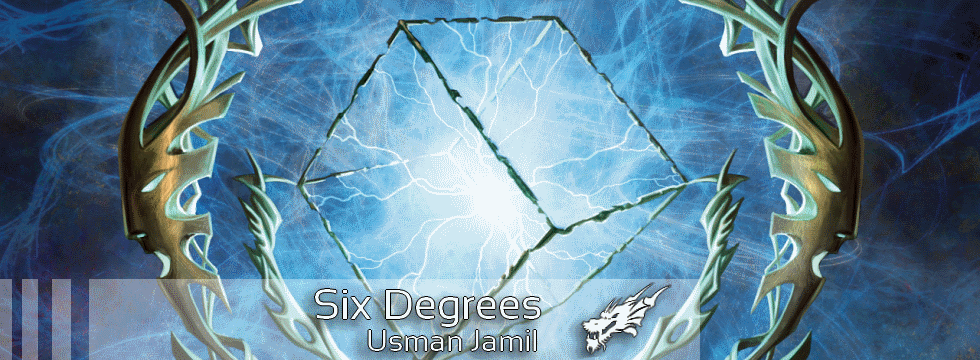
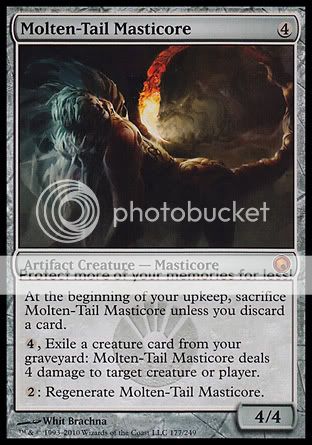
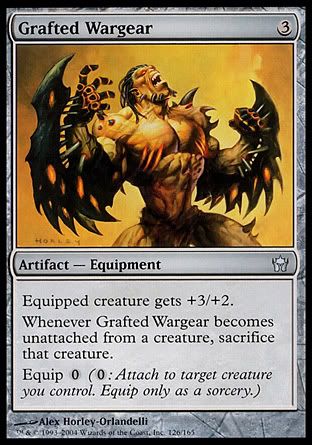
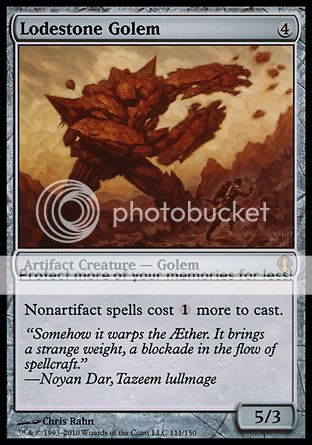
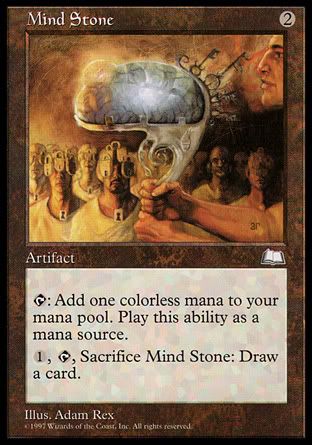



Something that you did not mention is, that the can not be destroyed by a good amount of Black's spot removal in particular those spells that come attached to a creature (Shriekmaw, Bone Shredder, Nekrataal, Go for the Throat, Terror).
Artifact creatures give you an out against creatures that have protection from your main color(s), which can be a real problem otherwise, no matter if you are on the defense or offense.
Side note: There is also a minor typo int the sentence about Shackles being a blue card, which is kind of annoying, because you have the card tags around it and get the link to a blank card back.